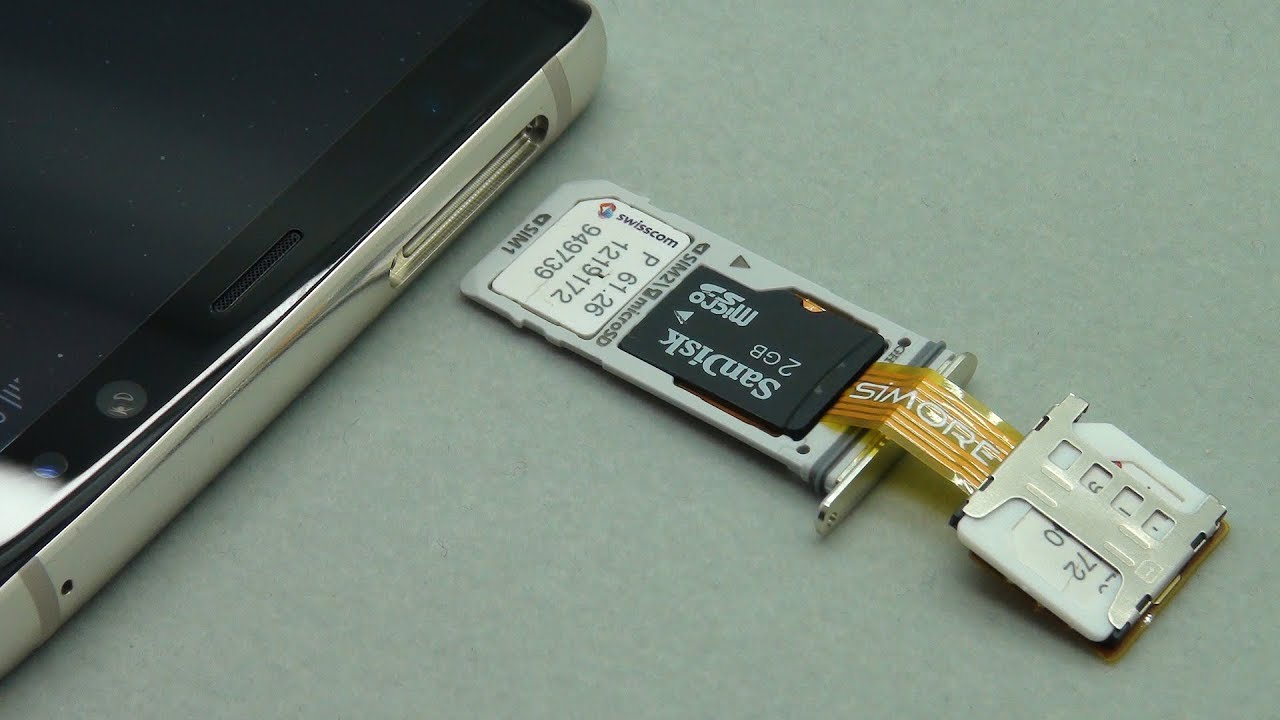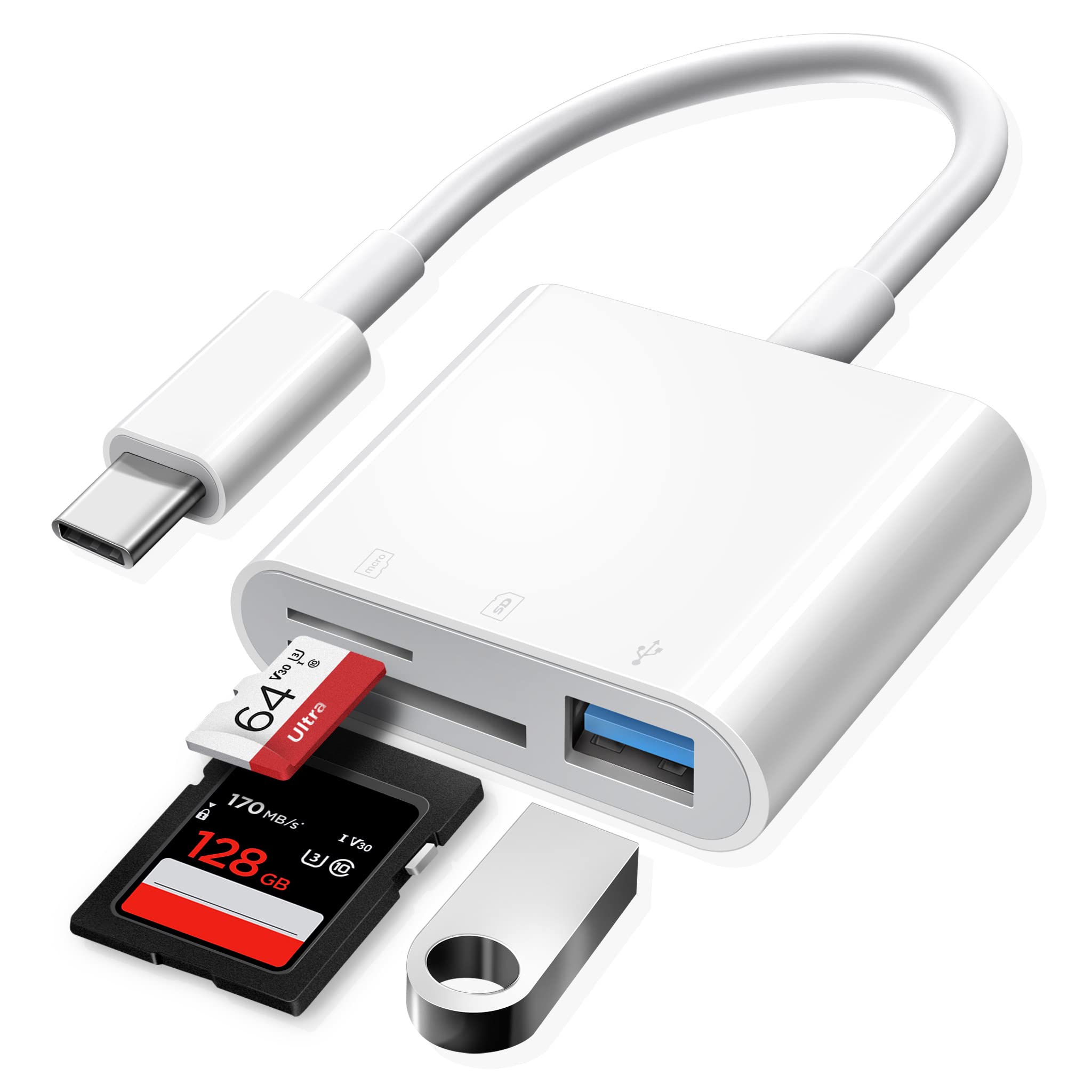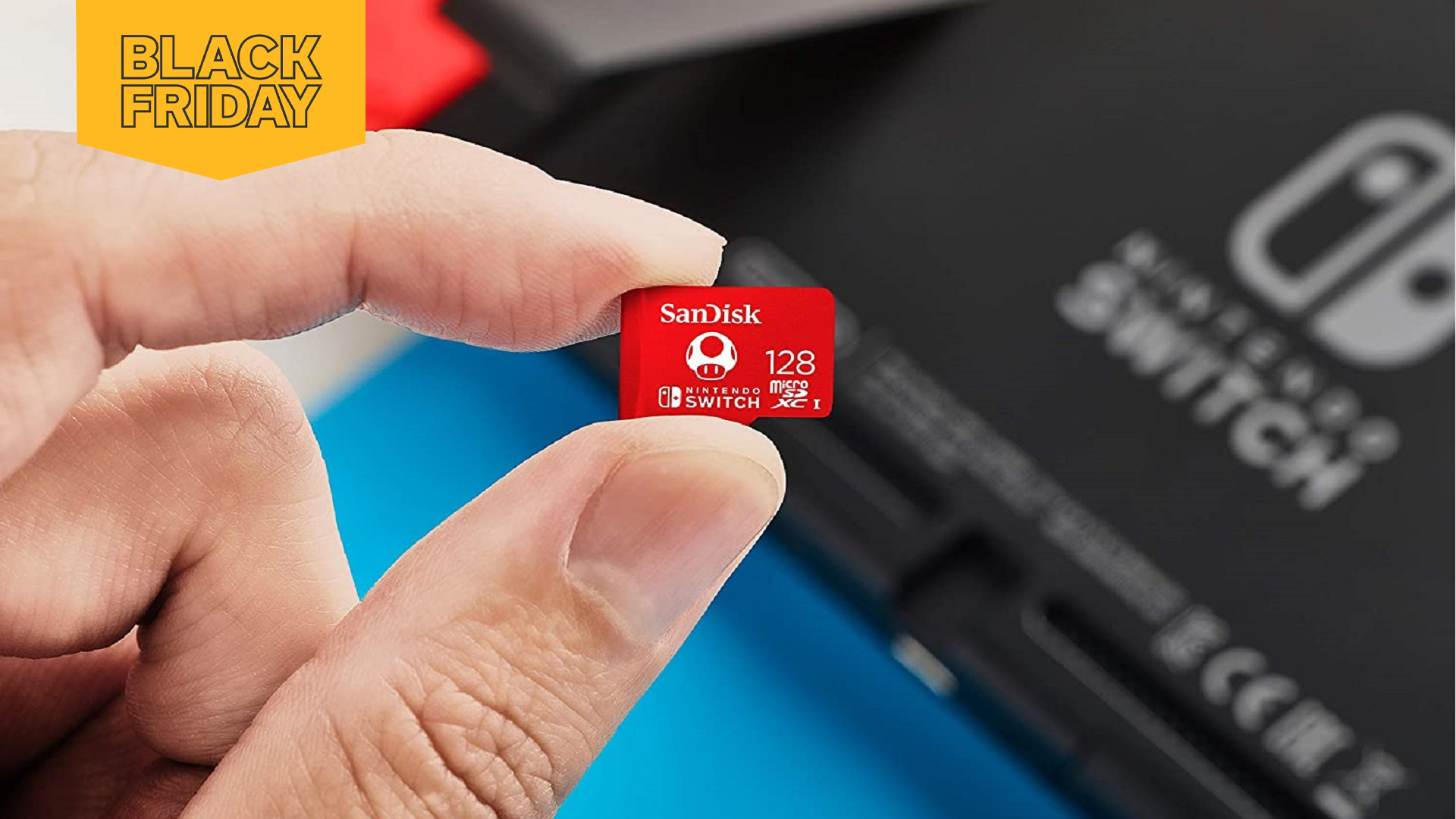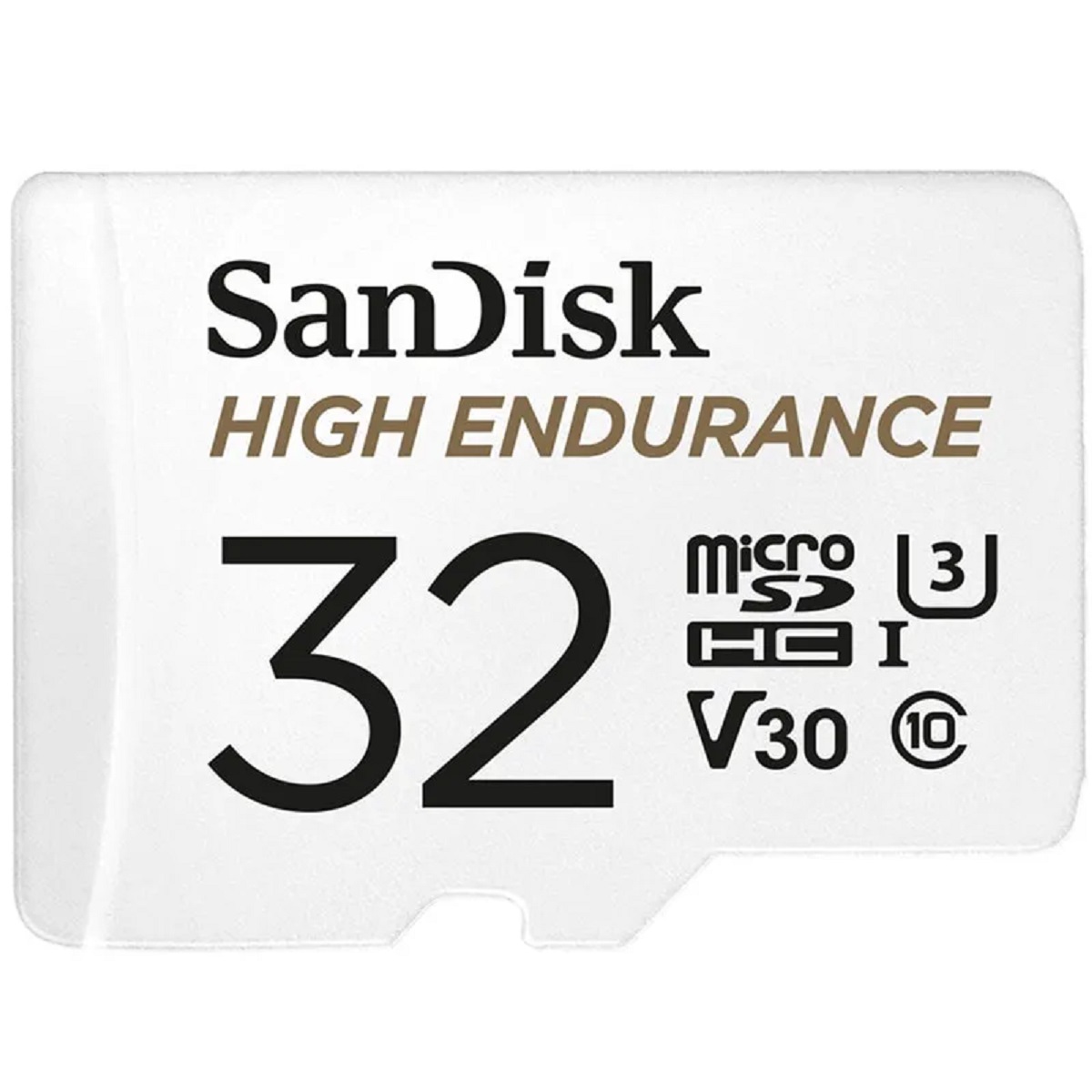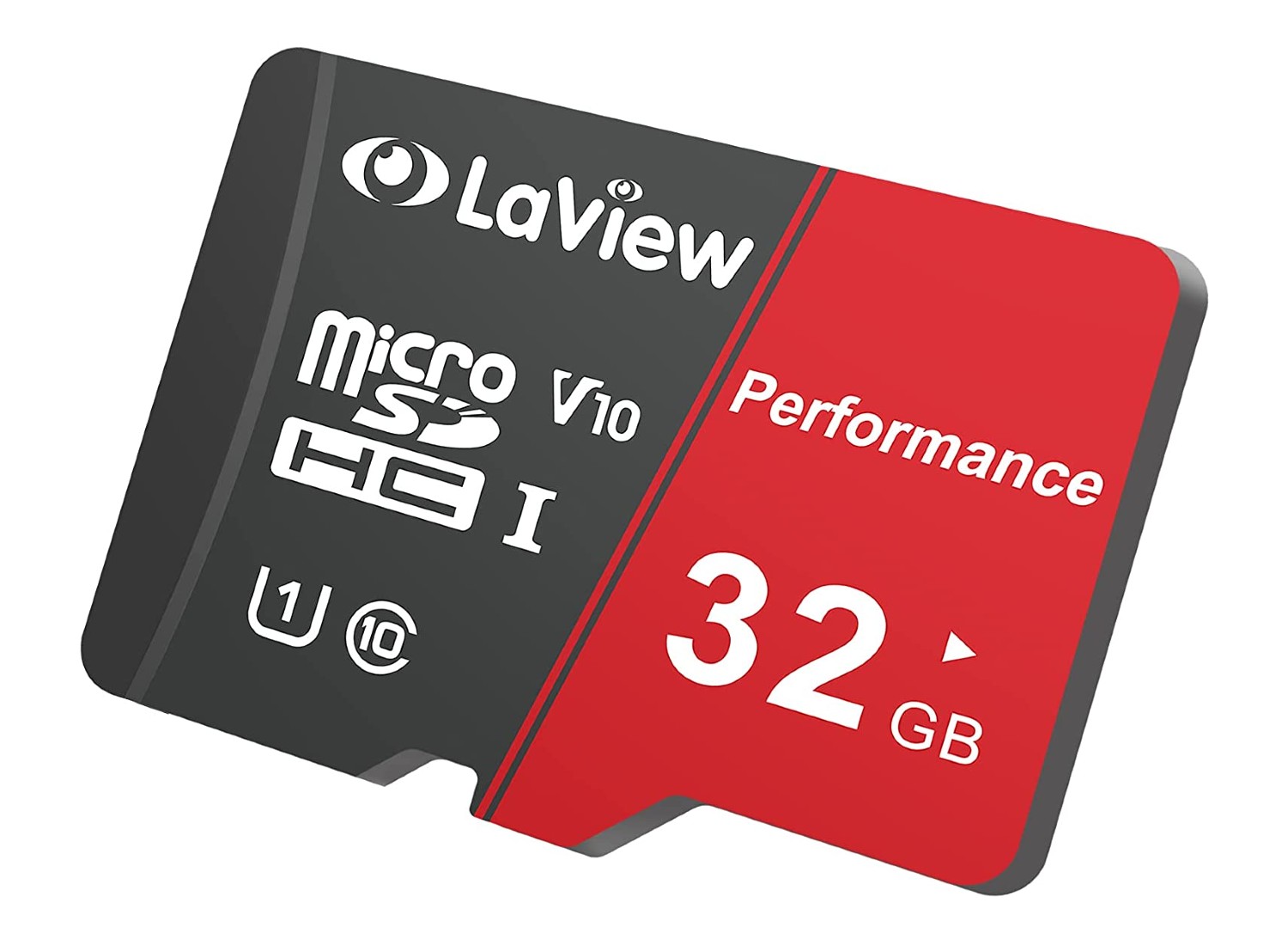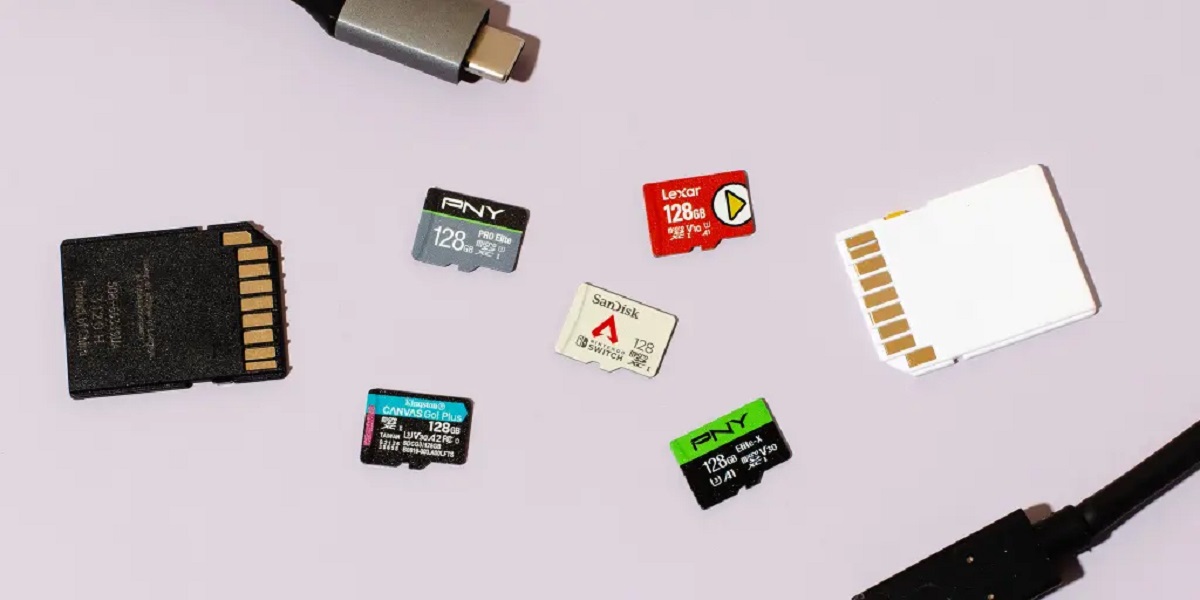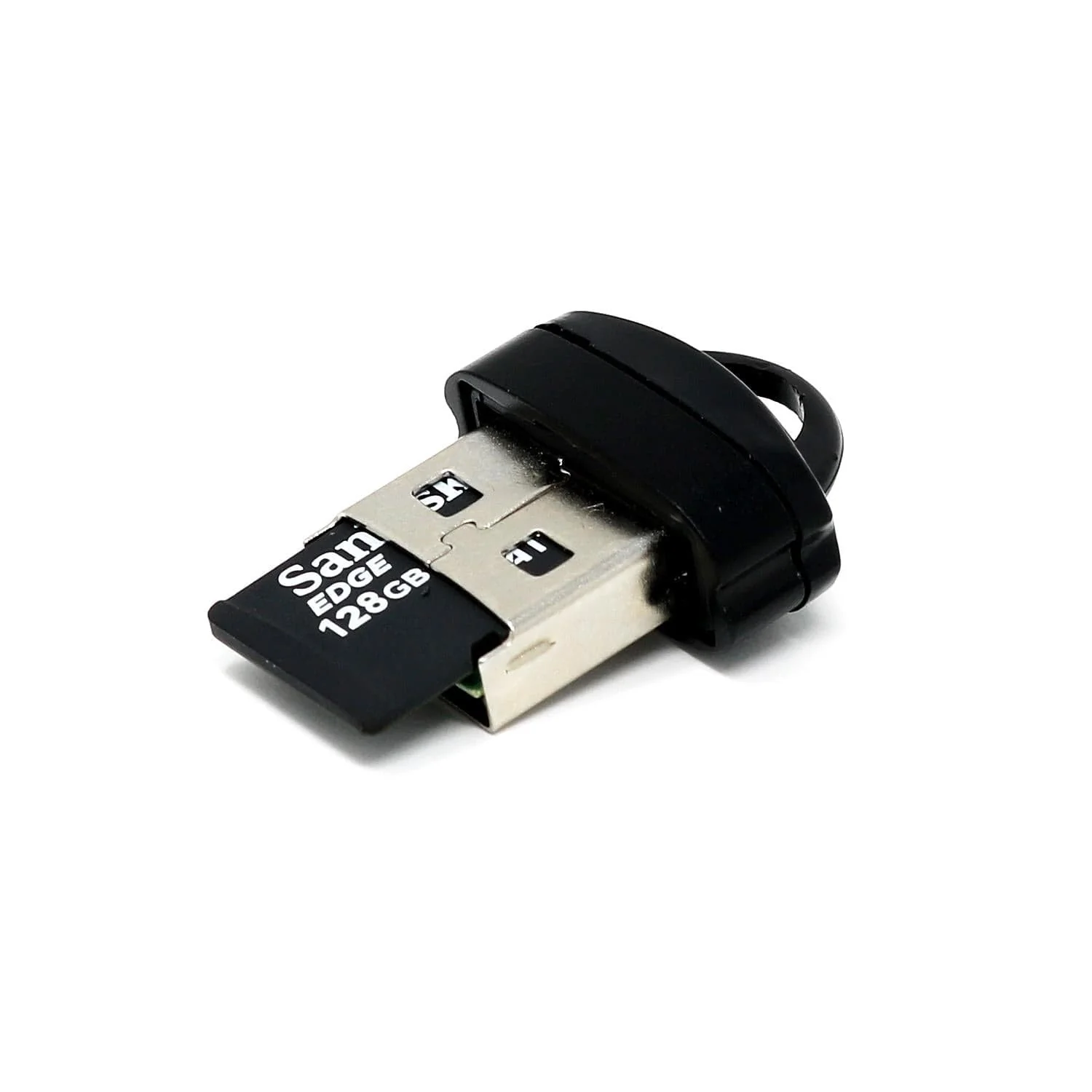What is an SD Card?
An SD (Secure Digital) card is a portable storage device commonly used in various electronic devices such as smartphones, digital cameras, and tablets. It provides additional storage capacity to expand the available space on these devices. The SD card is a small, rectangular-shaped chip that can store and transfer data, including photos, videos, music, and documents.
SD cards come in different storage capacities, ranging from a few gigabytes to several terabytes, allowing users to choose the size that suits their needs. They are an essential accessory for many mobile devices, allowing users to store and access more files without relying solely on the device’s internal memory.
These cards are typically formatted with a file system that makes it compatible with multiple devices and operating systems. The most common file system used is FAT32, but newer SD cards may also support exFAT or NTFS file systems. This flexibility allows users to transfer the SD card between different devices and seamlessly access their files.
In addition to their storage capacity, SD cards are known for their durability and reliability. They are designed to withstand varying environmental conditions, such as shocks, water, and extreme temperatures. This makes them ideal for use in rugged devices or situations where data security is paramount.
As technology continues to advance, SD cards have evolved to offer faster data transfer speeds. The latest SD card standards, such as SDHC (Secure Digital High Capacity) and SDXC (Secure Digital eXtended Capacity), can deliver high-speed performance, enabling quick storing and accessing of files.
In summary, an SD card is a small and portable storage device that expands the storage capacity of electronic devices. It allows users to store and transfer data conveniently, providing a flexible and reliable solution for managing large amounts of digital content.
Why Use an SD Card with Note 8?
The Note 8 is a fantastic smartphone that offers a wide range of features and functionalities. However, the device’s internal storage capacity may sometimes fall short, especially for users who store a large amount of media files, documents, and apps. This is where an SD card comes in handy. Here are several reasons why using an SD card with the Note 8 is beneficial:
- Expandable Storage Capacity: The Note 8 supports microSD cards, allowing you to significantly expand the device’s storage capacity. By adding an SD card, you can store more photos, videos, music, and other files without worrying about running out of space. Whether you’re a photography enthusiast, a music lover, or a productivity-driven user, the additional storage provided by an SD card is a valuable asset.
- Flexibility and Versatility: An SD card provides you with the flexibility to manage your storage space the way you want. You can easily transfer files between your Note 8 and other devices such as computers, tablets, or digital cameras. Furthermore, if you upgrade to a new device in the future, you can simply remove the SD card from your Note 8 and insert it into the new device, ensuring seamless access to your files.
- Backup and Security: Having an SD card in your Note 8 allows you to create backups of your important files. By regularly backing up your data to the SD card, you can have peace of mind knowing that your files are safe if anything were to happen to your device or its internal storage. Additionally, if you need to reset your device or switch to a new one, you can easily restore your data from the SD card, ensuring a smooth transition.
- Improved Performance: With an SD card, you can optimize the performance of your Note 8. By offloading some of your files to the SD card, you free up the device’s internal storage, which can lead to improved overall performance, faster app loading times, and smoother multitasking.
- Cost-Effective Solution: Compared to upgrading to a device with larger internal storage, using an SD card is a cost-effective alternative. SD cards are generally more affordable, allowing you to increase your storage capacity without breaking the bank.
In summary, using an SD card with your Note 8 provides you with expanded storage capacity, flexibility, backup options, improved performance, and cost-effectiveness. It is a practical solution for managing and accessing a large amount of data on your device, ensuring a seamless and enjoyable user experience.
Types of SD Cards Compatible with Note 8
The Note 8 supports microSD cards, which are a type of SD card specifically designed for use in mobile devices. When choosing an SD card for your Note 8, there are a few factors to consider. Here are the different types of SD cards compatible with the Note 8:
- SDHC (Secure Digital High Capacity): SDHC cards are capable of storing up to 32GB of data. They use the FAT32 file system and are widely available and affordable. SDHC cards are a great option for basic storage needs and are compatible with the Note 8.
- SDXC (Secure Digital eXtended Capacity): SDXC cards offer larger storage capacities, starting from 64GB and going up to several terabytes. They use the exFAT file system, which supports larger file sizes. SDXC cards are ideal for users who require ample storage for high-resolution photos, videos, and large files. Note 8 is compatible with SDXC cards.
- UHS-I (Ultra High-Speed): UHS-I SD cards provide faster data transfer speeds, making them suitable for capturing high-quality photos and recording 4K videos on the Note 8. These cards are backward compatible with older devices that don’t support UHS-I technology.
- UHS-II (Ultra High-Speed II): UHS-II SD cards offer even faster data transfer speeds than UHS-I cards. While the Note 8 is not equipped with a UHS-II compatible slot, you can still use UHS-II cards in your device. However, they will operate at UHS-I speeds.
- A1 and A2 Cards: A1 and A2 are performance specifications for SD cards that are optimized for app performance. These cards provide faster random read and write speeds, making them suitable for running apps directly from the SD card. While the Note 8 doesn’t specifically require A1 or A2 cards, using them can enhance app performance on your device.
When selecting an SD card for your Note 8, it’s essential to ensure that the card meets the required capacity and speed that your usage demands. Consider your storage needs, the types of files you’ll be storing, and any performance requirements before making your purchase. It’s also recommended to choose SD cards from reputable brands to ensure reliability and compatibility with your Note 8.
Step-by-Step Guide: How to Add an SD Card to Note 8
Expanding the storage capacity of your Note 8 is a straightforward process. Follow these simple steps to add an SD card to your device:
- Step 1: Locate the SIM card tray on your Note 8. It is usually found on the top or side of the device, depending on its model. Use the SIM ejector tool or a small paperclip to gently push into the pinhole and pop open the tray.
- Step 2: Once the tray is open, you will notice two slots. The smaller slot is for the SIM card, and the larger slot is for the microSD card. Ensure that the device is powered off before proceeding.
- Step 3: Take your microSD card and insert it into the larger slot of the SIM card tray. Make sure the gold contacts of the SD card are facing downwards and aligned with the pins in the tray.
- Step 4: Gently push the tray back into the device until it is securely in place. Take care not to force it, as it can damage the pins or the card.
- Step 5: Power on your Note 8. Once the device has started up, it will automatically detect the newly inserted SD card. A notification may appear, indicating that the SD card is ready for use.
- Step 6: To confirm that the SD card is successfully added, go to the “Settings” menu on your Note 8. Scroll down and tap on “Device maintenance” or “Device care,” then select “Storage.” You should see the total capacity of the internal storage and the added capacity of the SD card.
- Step 7: Congratulations! You have successfully added an SD card to your Note 8. You can now start using the expanded storage to store and access your files.
It’s important to note that once you have added an SD card to your Note 8, it will be treated as external storage. This means that certain apps or functions may not be able to be moved to or accessed directly from the SD card. However, you can still manually transfer files and store media on the SD card to free up space on the internal storage of your device.
Adding an SD card to your Note 8 is an excellent way to expand your device’s storage capacity and enhance your user experience. Whether you need more space for photos, videos, apps, or documents, the SD card provides a convenient solution to accommodate your growing storage needs.
Formatting the SD Card for Note 8
Before you can use a newly-added SD card with your Note 8, it is recommended to format the card to ensure compatibility and optimal performance. Here’s a step-by-step guide on how to format the SD card for your Note 8:
- Step 1: On your Note 8, go to the “Settings” menu by swiping down from the top of the screen and tapping the gear icon.
- Step 2: Scroll down and select “Device care,” “Device maintenance,” or a similar option depending on your device’s model and software version.
- Step 3: In the Device care or Device maintenance menu, locate and tap on “Storage.”
- Step 4: Under the Storage menu, you will see the option to “SD card.” Tap on it to access the settings for your SD card.
- Step 5: In the SD card settings, you will find various options. Look for the option to “Format” or “Format SD card” and tap on it.
- Step 6: A warning message will appear, notifying you that formatting the SD card will erase all data stored on it. Make sure you have backed up any important data before proceeding. If you are sure you want to proceed, tap on “Format.”
- Step 7: The formatting process will start, and it may take a few minutes to complete. Do not remove the SD card during this process to avoid data corruption.
- Step 8: Once the formatting is complete, you will see a confirmation message. Tap on “Done” or “Ok” to finish the process.
Formatting the SD card for your Note 8 ensures that it uses the appropriate file system and is ready for use with your device. The formatting process prepares the SD card to work seamlessly with your Note 8, allowing you to store and access files without any compatibility issues.
Note that formatting an SD card will erase all existing data, so it’s crucial to back up any important files before proceeding. After formatting, you can start using the SD card on your Note 8, storing photos, videos, music, and apps to extend your device’s storage and enjoy a seamless user experience.
Managing Storage and Data on the SD Card
Once you have added and formatted an SD card on your Note 8, it’s important to effectively manage the storage and data on the card to ensure optimal performance and organization. Here are some tips and methods for managing storage and data on your SD card:
- Move Apps to SD Card: Some apps on your Note 8 can be moved to the SD card to free up space on the device’s internal storage. To do this, go to “Settings,” tap on “Apps,” select the desired app, and choose the option to “Move to SD card” if available. However, not all apps can be moved, especially system apps.
- Transfer Files to the SD Card: You can manually transfer files from your Note 8’s internal storage to the SD card. Use the built-in file manager or a third-party file manager app to select and move files such as photos, videos, music, and documents to the SD card. This helps in freeing up space on the internal storage while keeping your files accessible.
- Backup Important Data: Regularly back up the data on your SD card to prevent data loss. You can use various methods such as copying the files to your computer or cloud storage services like Google Drive or Dropbox. Having a backup ensures that your files are safe in case of accidental deletion, SD card failure, or device issues.
- Maintain a Clean and Organized SD Card: Over time, your SD card may become cluttered with unused files, duplicate files, or temporary files. Regularly review and delete unnecessary files to free up space and ensure efficient storage usage. Organize your files into folders for easier access and management.
- Scan for and Fix Errors: Use the built-in error checking tool on your Note 8 to scan the SD card for any errors or inconsistencies. This can help identify and fix any issues that might affect the performance or reliability of the SD card. To access this tool, go to “Settings,” tap on “Device care” or “Device maintenance,” select “Storage,” then tap on “SD card” and choose the option to “Scan SD card.”
- Safely Eject the SD Card: Before removing the SD card from your Note 8, make sure to safely eject it to avoid data corruption or loss. Go to “Settings,” tap on “Storage,” select “SD card,” and choose the option to “Unmount” or “Eject” the SD card. Wait for the notification confirming that it is safe to remove the SD card before physically removing it from the device.
- Occasionally Format the SD Card: If you encounter any issues with the SD card, such as slow performance or file access problems, you can try formatting it again. Formatting the SD card will erase all data, so make sure to back up your files before doing so.
By following these tips and methods, you can effectively manage the storage and data on your SD card, ensuring efficient usage, organization, and the long-term reliability of your Note 8’s expanded storage solution.
Tips and Tricks for Using an SD Card with Note 8
Using an SD card with your Note 8 can greatly enhance your storage capacity and overall user experience. To help you make the most out of your SD card, here are some tips and tricks to keep in mind:
- Use a High-Quality SD Card: Invest in a high-quality SD card from reputable brands to ensure reliability, performance, and longevity. Avoid purchasing counterfeit or cheap SD cards, as they may compromise the performance and reliability of your Note 8.
- Regularly Back Up Your SD Card: To safeguard your important files, it’s essential to regularly back up the contents of your SD card. Consider using cloud storage services, such as Google Drive or Dropbox, or manually transferring files to your computer or external hard drive.
- Keep Your SD Card Clean: Avoid exposing your SD card to dust, dirt, moisture, or extreme temperatures. Use a clean microfiber cloth to gently wipe the card if it becomes dirty. Keeping your SD card clean can help prevent data corruption and maintain optimal performance.
- Avoid Removing the SD Card During Operations: To prevent data loss or potential damage to your SD card, avoid removing it while your Note 8 is performing read or write operations. Wait until your device has finished accessing the SD card before ejecting it.
- Turn Off Your Device Before Removing or Inserting the SD Card: Always power off your Note 8 before inserting or removing the SD card. This ensures that the card is properly recognized by the device and reduces the risk of damaging the card’s contacts or the device’s card tray.
- Use SD Cards for Media Storage: Consider using your SD card primarily for storing media files such as photos, videos, and music. By offloading these files from your device’s internal storage, you can free up space for apps, ensuring smoother performance.
- Regularly Check for SD Card Updates or Firmware: Some SD card manufacturers release firmware updates that can improve compatibility, performance, and stability. Check the manufacturer’s website or their app for any available updates and follow the instructions to keep your SD card up to date.
- Encrypt Your SD Card: If you store sensitive files on your SD card, consider encrypting it for added security. The Note 8 offers built-in encryption capabilities that can help protect your data from unauthorized access in case your SD card falls into the wrong hands.
- Be Mindful of App Compatibility: Not all apps can be moved to the SD card, especially system apps and some app data. Keep this in mind when managing your device’s storage and make sure to check individual app settings to determine if they can be transferred to the SD card.
- Regularly Monitor SD Card Health: Check your Note 8’s storage settings periodically to monitor the health and available space on your SD card. If you notice any abnormalities, such as unusual file errors or decreasing storage capacity, consider backing up your data and testing the SD card for potential issues.
By following these tips and tricks, you can maximize the benefits of using an SD card with your Note 8. Enjoy the expanded storage capacity, improved performance, and flexibility that the SD card brings to your device.
Troubleshooting Common Issues with SD Cards on Note 8
While using an SD card with your Note 8 can greatly enhance your device’s storage capacity, you may encounter some common issues along the way. Here are some troubleshooting tips for resolving common issues with SD cards on the Note 8:
- SD Card Not Detected: If your Note 8 doesn’t recognize the SD card, ensure that it is properly inserted into the device’s card tray. Remove the SD card, clean the contacts using a soft cloth, and reinsert it. If the problem persists, try using a different SD card to rule out any potential hardware issues.
- SD Card Slow Performance: If your SD card is performing slower than expected, it may be due to various factors. Try formatting the SD card to remove any fragmented data and optimize its file system. Additionally, avoid storing too many files or running resource-intensive apps directly from the SD card, as it can impact its performance.
- SD Card Unmounting Unexpectedly: If your Note 8 frequently unmounts the SD card without warning, ensure that the card is properly inserted and securely seated in the card tray. Check if the card or the card tray is physically damaged and replace them if necessary. It’s also worth checking if the SD card is compatible with your device and meets the required specifications.
- SD Card Read/Write Errors: If you encounter read or write errors when accessing files on the SD card, try using a different file manager app to access your files. Additionally, make sure that the SD card is not set to read-only mode. If the issue persists, consider backing up your data and formatting the SD card to resolve any potential filesystem issues.
- Incompatibility with Apps: Not all apps can be moved to the SD card, and some may not function correctly when installed on external storage. If you encounter issues with specific apps, try reinstalling them on your device’s internal storage. Check the app settings or contact the app developer for further assistance.
- Insufficient Storage Space on the SD Card: If you are running out of space on your SD card, consider freeing up space by deleting unnecessary files or transferring them to another storage location. Regularly review your files on the SD card to optimize storage usage and prevent storage capacity issues.
- SD Card Corruption: In the event of SD card corruption, you may experience data loss or encounter read/write errors. To minimize the risk of corruption, always safely eject the SD card before removing it from the device. Regularly backing up your SD card and periodically formatting it can help resolve potential corruption issues.
- Inconsistent File Transfer: If you experience issues with file transfer between your Note 8 and the SD card, check if the SD card’s file system is compatible with your device. Additionally, try using a different USB cable or computer to rule out any potential connectivity issues. Updating your device’s software may also resolve any compatibility or transfer problems.
If you continue to experience issues with your SD card on your Note 8, and the troubleshooting steps mentioned above do not resolve the problem, consider contacting customer support for further assistance. They can provide additional troubleshooting steps or guide you on the necessary steps for replacement or repair.
Frequently Asked Questions about Using SD Cards with Note 8
Here are some common questions and answers about using SD cards with the Note 8:
- Q: What is the maximum supported SD card capacity for the Note 8?
A: The Note 8 supports microSD cards with a maximum capacity of up to 256GB. However, it’s important to note that larger capacity SD cards might become available in the future, so it’s always best to check for the latest compatibility information from Samsung or your SD card manufacturer. - Q: Can I use the SD card from my old device in the Note 8?
A: Yes, you can use the SD card from your old device in the Note 8, as long as it is a microSD card and meets the required specifications. However, it is recommended to back up the data on the SD card and format it on the Note 8 to ensure optimal performance and compatibility. - Q: Can I move apps to the SD card on the Note 8?
A: Yes, some apps can be moved to the SD card on the Note 8. To do this, go to “Settings,” tap on “Apps,” select the desired app, and choose the option to “Move to SD card” if available. However, note that not all apps can be moved, especially system apps and some app data. - Q: Can I format the SD card on my Note 8?
A: Yes, you can format the SD card on your Note 8. Go to “Settings,” tap on “Device care” or “Device maintenance,” select “Storage,” then tap on “SD card” and choose the option to “Format” or “Format SD card.” Formatting the SD card will erase all data, so make sure to back up any important files before proceeding. - Q: Can I use multiple SD cards with the Note 8?
A: Yes, you can use multiple SD cards with the Note 8. Simply insert the desired SD card into the device’s card tray, and the Note 8 will recognize the new SD card. However, only one SD card can be active at a time, meaning that you’ll need to switch between SD cards by physically removing and inserting them into the device’s card tray.
These FAQs should provide you with a better understanding of using SD cards with the Note 8. If you have any further questions or need additional assistance, refer to the device’s user manual or contact Samsung support for more specific guidance.
Conclusion
Using an SD card with your Note 8 is a practical and convenient way to expand your device’s storage capacity, allowing you to store more photos, videos, music, and files. By following the step-by-step guide for adding an SD card, formatting it, and managing the storage and data effectively, you can optimize your Note 8’s performance and enjoy a seamless user experience.
Remember to choose a high-quality and compatible SD card, regularly back up your data, and keep the SD card clean to ensure its reliability and longevity. Troubleshooting common issues and being aware of helpful tips and tricks can help you overcome any challenges and make the most out of your SD card usage.
Whether you’re a photography enthusiast, a music lover, or someone who needs ample space for work-related files, an SD card provides the flexibility and convenience you need. With the ability to expand your storage, transfer files between devices, and enhance your overall storage management, the SD card is a valuable accessory for your Note 8.
By harnessing the power of an SD card, you can unlock the full potential of your Note 8 and enjoy the benefits of having ample storage space at your fingertips. So go ahead, add an SD card to your Note 8, and embrace the freedom of storing and accessing your files with ease.







